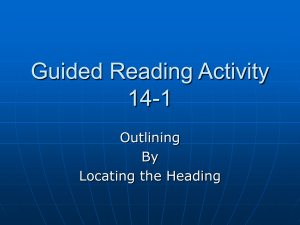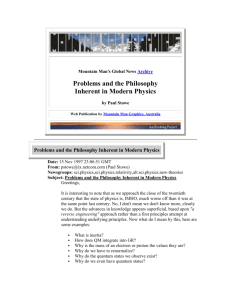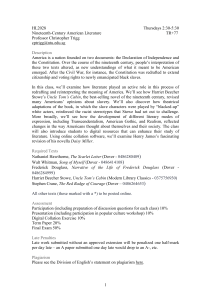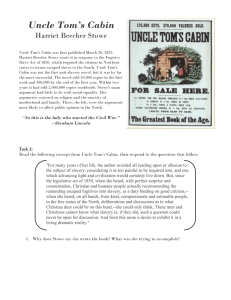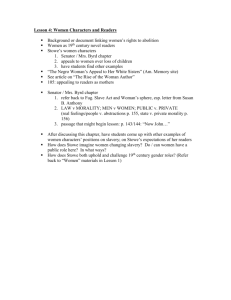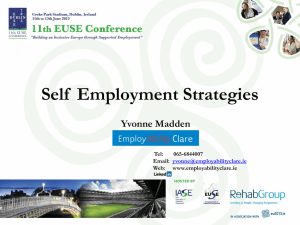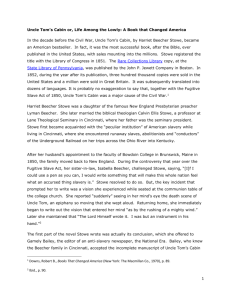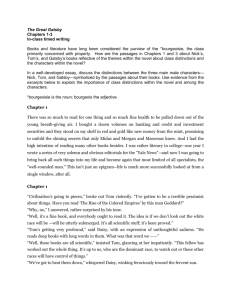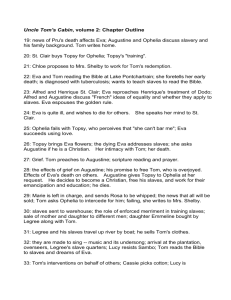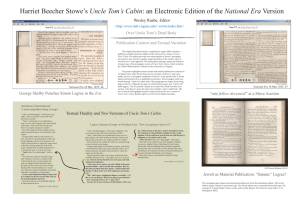Study Questions for Uncle Tom`s Cabin - AmNovel1900
advertisement
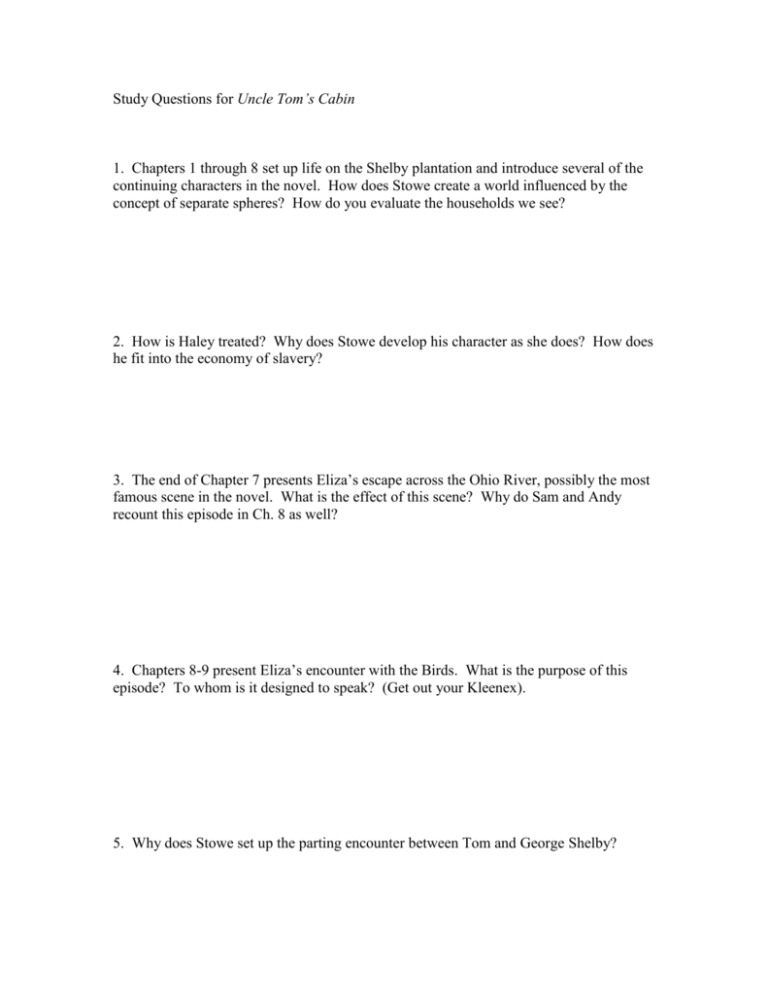
Study Questions for Uncle Tom’s Cabin 1. Chapters 1 through 8 set up life on the Shelby plantation and introduce several of the continuing characters in the novel. How does Stowe create a world influenced by the concept of separate spheres? How do you evaluate the households we see? 2. How is Haley treated? Why does Stowe develop his character as she does? How does he fit into the economy of slavery? 3. The end of Chapter 7 presents Eliza’s escape across the Ohio River, possibly the most famous scene in the novel. What is the effect of this scene? Why do Sam and Andy recount this episode in Ch. 8 as well? 4. Chapters 8-9 present Eliza’s encounter with the Birds. What is the purpose of this episode? To whom is it designed to speak? (Get out your Kleenex). 5. Why does Stowe set up the parting encounter between Tom and George Shelby? 6. How does Stowe place women in positions to work change within the novel? How does she manipulate 19th century expectations? From where does women’s power come? 7. What comparisons are being made between George Harris and Tom? How does George develop once he escapes? 8. When Haley and Uncle Tom are traveling we are shown an encounter at a slave auction and its tragic aftermath. Why does Stowe use this? What does it reveal about Haley? How does it serve as an indictment of the economy of slavery? 9. How is the Quaker settlement presented? What qualities emerge in the Hallidays and other Friends? In what ways does Stowe use this group to raise issues between man’s laws and God’s? 10. Once both Eliza and Tom have embarked on their journeys, they go in two different directions: Eliza continues north in the hope of freedom, while Tom moves further south. How does Stowe use this to structure her novel? What are the implications behind it? 11. Chapters 14 to 29 focus primarily on the St. Clare household and Tom’s experiences there. How does the world of the St. Clares differ from that of the Shelbys? Why is Marie St. Clare a problematic figure? 12. Through much of the novel, the values of home stand in opposition to or challenge the values of capitalism. What are the differences in these two value systems? Even though slavery is tied to agriculture in the novel, how do the values of capitalism inform the slave system? How might this help us see one of the reasons that abolitionists fear the expansion of slavery into new territories? 13. To bring some order and regularity to his household, St. Clare invites his northern cousin Ophelia to his home. What qualities does she possess? How does she view her cousin’s household and the system of slavery? Why does St. Clare accuse her of being a hypocrite? 14. To test his cousin’s ideas, St. Clare buys Topsy for her – a “gift” that Ophelia initially refuses. What does she learn about Topsy? How does she try to teach her? What does she learn from Topsy? 15. Evangeline (Little Eva) St. Clare is the spiritual center of the St. Clare household. How do her behaviors and attitudes stand in contrast to those of almost everyone else around her? Why does Stowe use a child in this way? Why does she later introduce Eva’s cousin Henrique as a foil to Eva? 16. How does Eva have an effect on Ophelia? How does she affect her father? When Eva falls ill, what role does she play? Her death-bed scene spans several days. Why would Stowe prolong this event? How does Eva become a Christ-like figure? 17. The death of St. Clare throws his household into turmoil and once again Stowe dramatizes the precarious position that slaves occupy. She makes plain that a kind or even moderately decent master is no protection from the system. What are the effects of St. Clare’s death? Why does this happen? 18. At the slave auction, Tom is purchased by Simon Legree. Why does Legree make him change clothes? Why is this a symbolic moment? 19. Why might Stowe label the journey to Legree’s plantation “The Middle Passage”? 20. What is the point of including Cassy’s story? 21. What are the implications of Legree’s philosophy to “Use up and buy more”? How does this serve as another indictment of the marketplace mentality? Can it also be applied to practices in the north? 22. How does the Legree household compare to the other domestic settings we have seen? Why does Stowe present the setting in this way? 23. Why does Legree take such an intense dislike to Tom? How do Tom’s acts of passive resistance turn him into a Christ-figure? Does his sacrifice achieve redemption for others? 24. How do you interpret the closing chapters of the novel? Are they problematic in any way?
